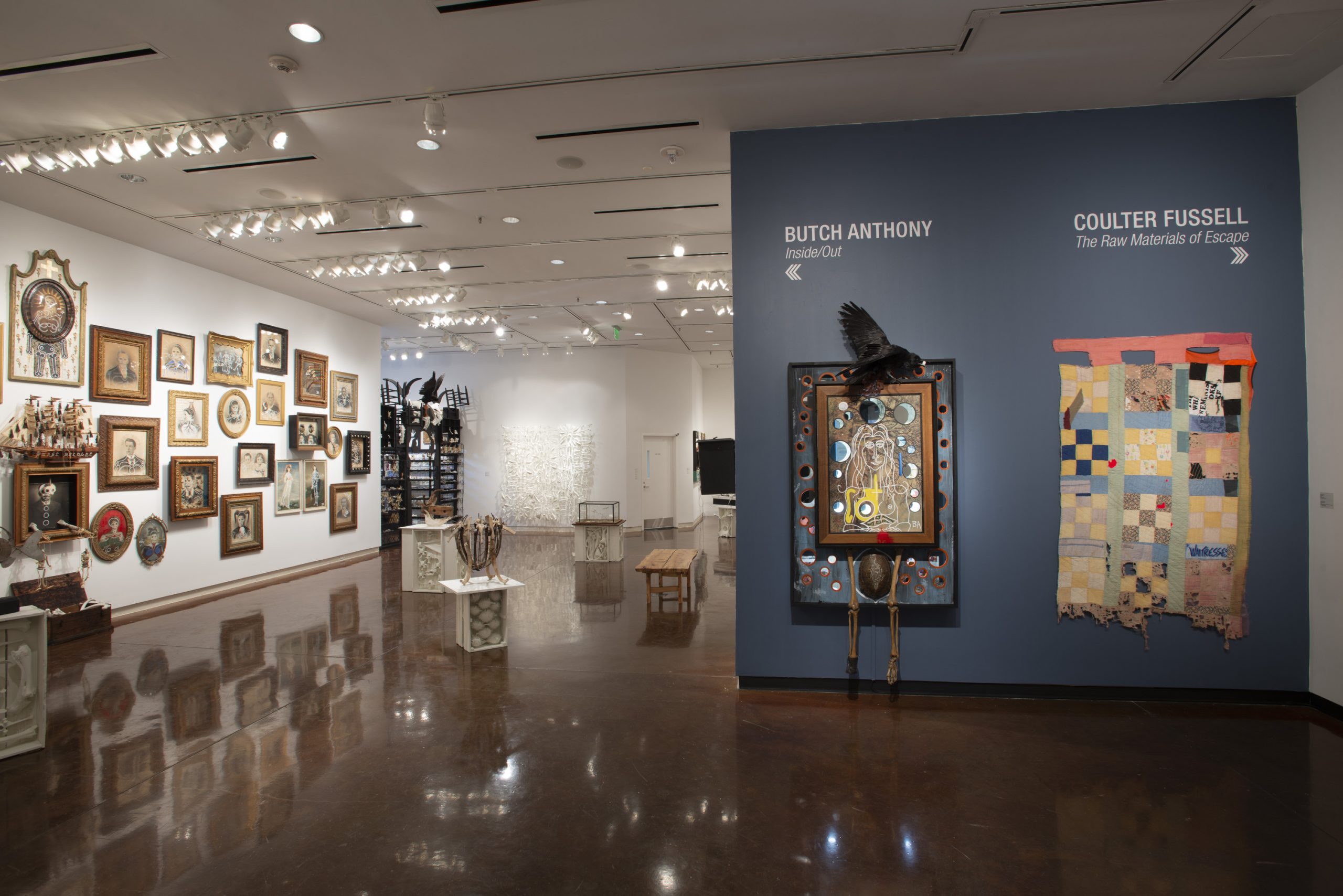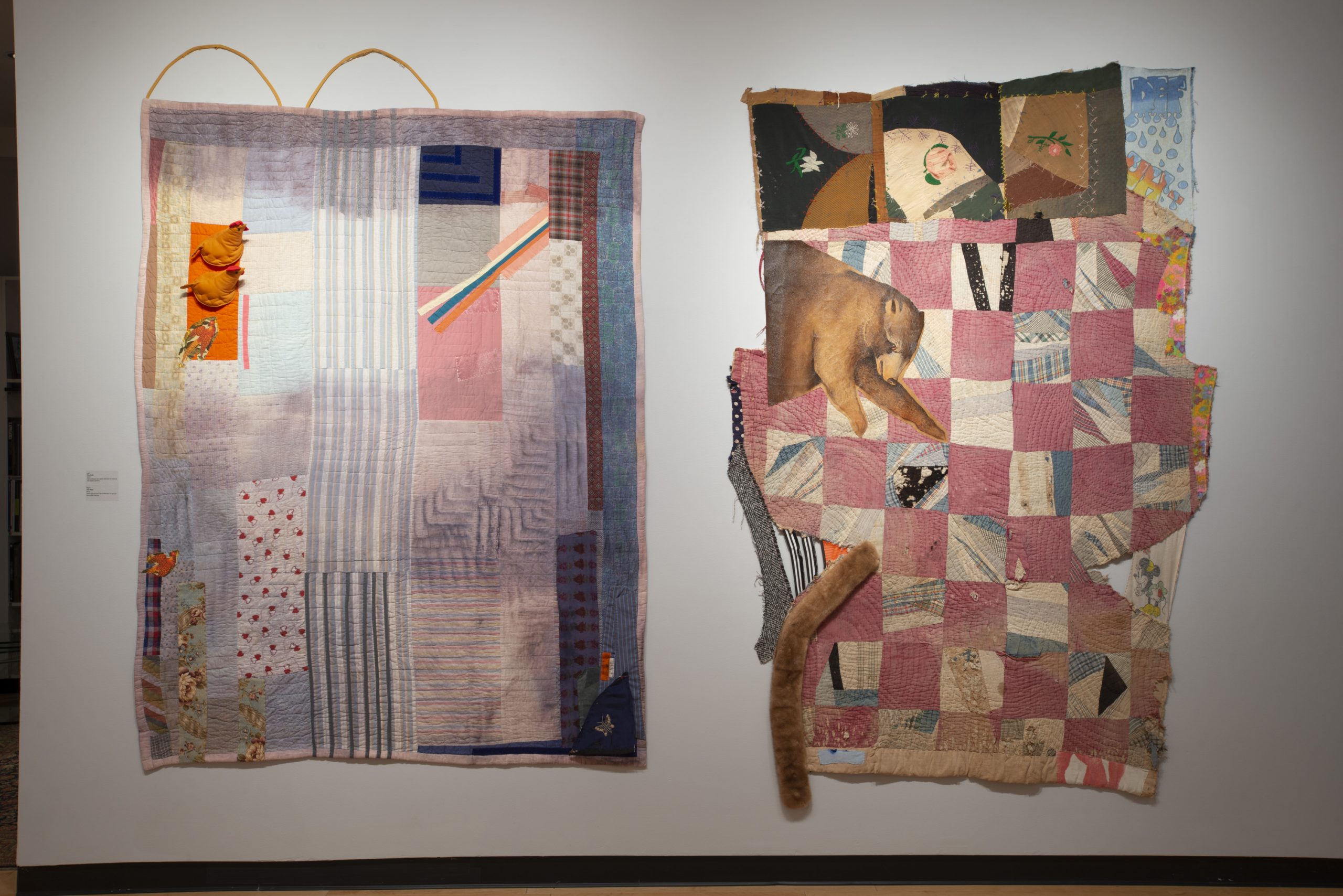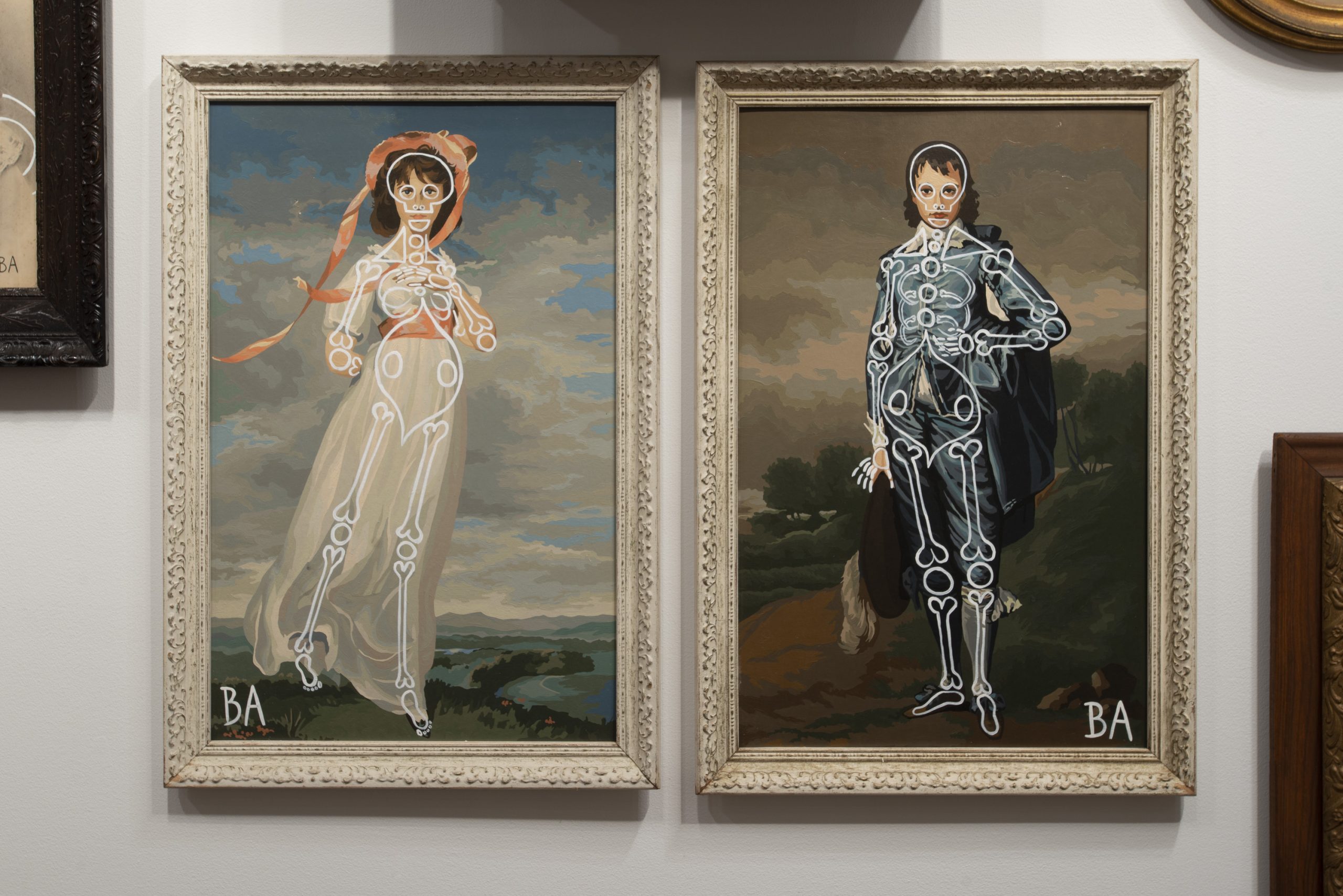


Though Butch Anthony’s pieces in Inside/Out and and Coulter Fussell’s quilts in The Raw Materials of Escape address the traditions of folk art, their approaches differ aesthetically and materially. Butch Anthony’s works incorporate taxidermy and animal bones, as well as other found materials. Similarly, Coulter Fussell’s quilts utilize found and donated fabrics which are then sewn together. Though quilting as a tradition is largely thought of as a purely practical pastime for women, Fussell alters that perception by making her pieces from unconventional materials that skew more towards establishing narrative and theme than simply being functional. Because of this, many of her works would work better as art pieces than as quilts to provide warmth. Here, the tradition of quilting and textile artwork is taken beyond craft and into the realm of fine art. The pieces gain meaning and visual interest beyond that which is garnered through even stitching or a soft exterior. Folk art becomes fine art.

Coulter Fussell, The Raw Materials of Escape, installation view, photo: Rick Rhodes.
Inside/Out and The Raw Materials of Escape both address the idea of artistic tradition and challenge what is and isn’t considered to be an artistic medium. If painting is considered an artistic tradition, why not create quilts and textile pieces which employ the visual language of painting? If sculpture is considered an artistic medium, why not create and arrange pieces made from animals’ bones and bodies? Butch Anthony pushes this a step farther by also addressing artistic traditions directly in many of his photographic pieces and paintings. Here, he is literally creating pieces on top of a representation of the artistic canon. The Blue Boy—Anthony’s Intertwangle painted on a smaller copy of the 1770 painting of the same name by Thomas Gainsborough—gains a new level of humor with one of Butch’s x-ray skeletons painted on top of it. While surrounded by taxidermized animal specimens and intricately arranged seashells, Darwin becomes less imposing than his larger than life portrait would imply. Many of Butch Anthony’s pieces in Inside/Out reference art as an institution and break down the walls of the museum space to allow for a wider range of artistic exploration.

Butch Anthony, Inside/Out, installation view, photo: Rick Rhodes.
Both Butch Anthony and Coulter Fussell incorporate folk art traditions and aesthetics in their work while simultaneously creating work that can be viewed and consumed as fine art. One might be tempted to say that their work elevates the status of folk art into the world of fine art. However, this statement implies that folk art is somehow less valuable or less refined than old master paintings that can be found in museums. It may be more accurate to say that through their respective exhibitions, Butch Anthony and Coulter Fussell demonstrate the strength and beauty that folk art can achieve. Rather than elevating the nature of folk art traditions, Inside/Out and The Raw Materials of Escape illustrate how folk art is fine art in its own right.
By Caliyah Parker, Halsey Institute intern